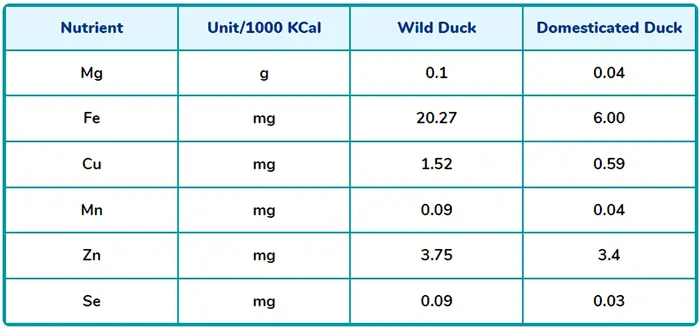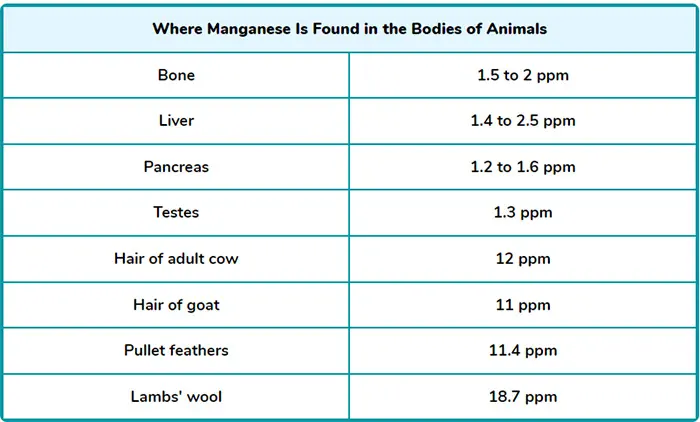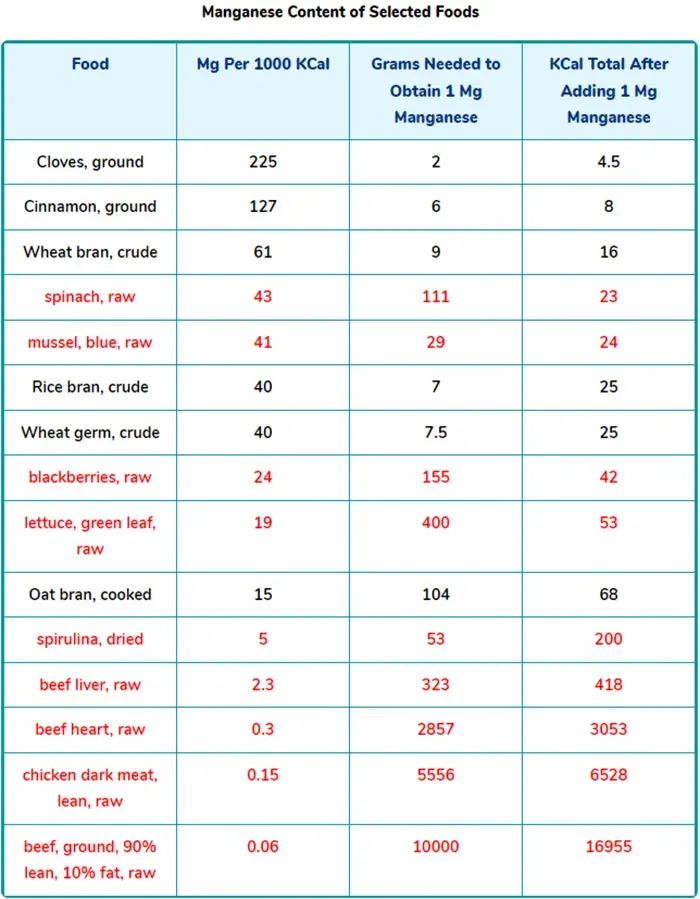What’s Behind the Epidemic of Cranial Cruciate Ligament Disease?
Cranial cruciate ligament (CCL) injuries are all too common in dogs today, and despite what many people believe, it's rare that a CCL just suddenly ruptures. Instead, it degenerates over months or years. So what's behind the breakdown in these all-important knee joint ligaments?

STORY AT-A-GLANCE
- Cranial cruciate ligament (CCL) disease is a common problem in large dogs, especially certain breeds. The condition is rarely seen in cats
- The crucial ligaments are the main stabilizers of the knee joint, and injuries range from mild sprains to complete tears
- The two main ways CCL injuries occur: 1) extensive physical trauma (notable injuries), and 2) nutritional deficiency, which weakens the ligaments over time, predisposing the animal to rupture without notable trauma. Nutritional therapy is the best way to prevent a CCL injury, especially in genetically predisposed dogs
- Rupture, or complete tear of the CCL is a common cause of hind limb lameness, pain, and arthritis in affected dogs, but sprains are much more common
- There are many effective treatments for partially torn CCL injuries that have proved beneficial in relieving pain and helping dogs regain their mobility
- Non-surgical options to treat CCL disease include acupuncture, massage, laser therapy, therapeutic exercise, weight loss for obese dogs, and nutritional therapy, including supplements
- Every CCL patient and situation is different, so the challenge for veterinarians is to find a multimodal treatment approach that best suits the needs of each dog and his or her guardian
Editor's Note: This article is a reprint. It was originally published May 25, 2016.
Unfortunately, cranial cruciate ligament (CCL) disease is an all-too-common problem in canine companions today. If you've known a dog with a CCL injury, you know how serious and debilitating it can be.
The condition affects dogs of every size and age, but certain breeds are overrepresented, including the:
- Akita
- Newfoundland
- Chesapeake Bay Retriever
- Rottweiler
- Labrador Retriever
- Saint Bernard
- Mastiff
- Staffordshire Terrier
Studies have identified a genetic component for the disease in Newfies and Labs. Breeds unlikely to develop CCL disease include the Basset Hound, Dachshund, Greyhound, and Old English Sheepdog. The condition is rarely seen in cats.
What Cruciate Ligaments Are and What They Do
The cruciate ligaments are bands of fibrous tissue, two per knee joint (called the "stifle") in the back legs of dogs. The ligaments connect the femur, which is the bone above the knee joint, and the tibia, the bone below it.
The cruciate ligaments are main stabilizers of the knee joint. They cross over each other, with one band running from the inside to the outside of the knee joint, and the other from the outside to the inside. In humans, the CCL is called the anterior cruciate ligament (ACL).
Inside the knee joint between the femur and tibia is cartilaginous material called the meniscus. The job of the meniscus is to absorb shock and assist with load bearing, and it can be damaged when there is injury to the cruciate ligaments.
Causes of CCL Disease
Rupture of the CCL is a very common reason for hind limb lameness, pain, and arthritis of the knee in affected dogs. Ruptures can be partial or complete.
The word "rupture" or "tear" draws a mental picture of an injury to a healthy ligament that occurs suddenly (acutely). However, according to the American College of Veterinary Surgeons (ACVS), in the vast majority of affected dogs, the ligament has been gradually deteriorating over a period of months or years.1
When the CCL tears or ruptures, the knee bones no longer move normally and your dog will have difficulty putting weight on the leg without it collapsing. That's because the tibia is no longer supported by the cruciate ligament and thrusts forward when any weight is exerted on the leg.
Indeed, with complete tears (picture a rope torn in half), nothing except surgical correction or replacement will make the joint completely functional again. The type of surgical technique selected and the competence of the surgeon have a lot to do with outcome success, along with rehabilitation therapy and long-term joint support.
However, the majority of dogs suffer from recurring sprains and not complete ruptures (picture a frayed rope). In these situations, I recommend you avoid surgery as long as possible by instituting an intensive management protocol.
CCL injuries are painful for your dog, and without proper treatment, permanent joint damage can result. Unfortunately, estimates are that from 40% to 60% of dogs with CCL disease in one knee go on to develop the problem in the other knee.
Is Surgery the Only Option to Treat CCL Damage?
Traditionally, surgery has been the recommended treatment for dogs with CCL damage, and many veterinarians still insist it is the only effective remedy. However, others in the veterinary community (I'm one of them) prefer to take a more conservative, multimodal approach whenever possible.
Dr. Brenda Kennedy, a veterinarian who works with Canine Companions for Independence, an organization that provides large breed assistance dogs to people with disabilities, tells Veterinary Practice News:
"Physical therapy can be performed to help with dynamic stabilization of the stifle by improving musculoskeletal strength in the affected limb. Management of pain through medication, Adequan injections, and other therapies, such as lasers or acupuncture, can help reduce the discomfort.
These treatments are viable options for patients who cannot have surgery and can be very helpful to dogs post-surgery."2
Kennedy and other experts agree that keeping dogs lean is key in both preventing CCL injuries and helping affected animals maintain their mobility:
"Since we only train Labrador Retrievers, Golden Retrievers and crosses of the two, we have a population of dogs that are susceptible to cruciate ligament tears," says Kennedy.
"This is one of the reasons why we stress to our volunteers and graduates the importance of maintaining a lean body mass in these dogs from a young age — currently, it is one of our best tools for prevention."3
According to veterinary surgeon Simon Roe, Ph.D., of the North Carolina State University Randall B. Terry Companion Animal Veterinary Medical Center, one group that seems to do especially well with non-surgical management of CCL disease, at least in the short-term, are dogs under 33 pounds who are lean and only moderately active.4
Non-Surgical Options
Dr. Narda Robinson, who heads the Colorado State University Center for Comparative and Integrative Pain Medicine, believes there are many non-surgical options for dogs with CCL injuries.
These include acupuncture, massage, laser therapy, therapeutic exercise, weight loss for obese dogs, pharmaceuticals, and supplements.
"In human medicine, the more conservative surgeons are recommending several weeks of rehabilitation and pain control before even considering surgery," says Robinson.
"… The folks I've talked to around the country frequently tell me that after they give the dog time to heal and supportive therapy, the dog's lameness resolves. Not always, but many times."5
Robinson is absolutely not an advocate of CCL surgeries such as the TPLO (tibial plateau leveling osteotomy) as a preventive measure for dogs that are doing well with non-surgical therapies:
"Given the amount of chronic pain and dysfunction that may result from a highly invasive approach, such as the TPLO," says Robinson, "I can't see the justification in putting a dog through this traumatic experience in order to prevent a possible future lameness. It doesn't make sense."6
Strategies for Non-Surgical Treatment of CCL Disease
Treating CCL disease non-surgically involves three essential strategies:
- Controlling pain
- Supporting and improving joint health, slowing degenerative joint disease (DJD)
- Restoring function and strength to the injured leg
Far too often I see conventional veterinarians manage pain, but do nothing to reinforce remaining ligament integrity or support cartilage. Providing pain relief without slowing degeneration can actually make the situation worse, allowing the dog to overuse the injured knee and increasing the likelihood a partial tear becomes a complete tear.
Instituting chondroprotective agents (CPAs) as soon as possible helps reduce further damage to joints. For genetically predisposed breeds this means beginning CPAs proactively, at 6 months to 1 year of age. The most commonly used CPAs are perna mussel (green-lipped clam), eggshell membrane, glucosamine sulfate, MSM, and cetyl myristoleate.
Dogs that have had substantial CCL injury should be on progressive joint protocols for the rest of their lives to slow degenerative joint disease in the injured knee and improve ligament resiliency in the opposite knee.
The Six Protocols I Use With My CCL Patients
I created a six-protocol program for my patients:
- Protocols for young dogs with acute ligament sprains or healthy animals with a genetic predisposition to tears
- Protocols for young dogs with partial tears
- Protocols for middle-aged dogs with mild degenerative changes from chronic re-injury
- Protocols for moderate articular changes geared toward slowing arthritis formation, as well as preventing muscle atrophy
- Protocols for significant musculoskeletal challenges and patients with severely debilitating DJD, geared toward aggressive management of inflammation and pain
- Protocols for the profoundly crippled patient, geared towards improving overall comfort, managing chronic pain and addressing compensatory changes
The exact supplement, exercise, and dietary regimen is based on each dog's specific circumstances, age, activity level and job (for example, agility athletes and police dogs have different ligament stress than other dogs). I want to emphasize there is no "cookie cutter" treatment approach when a dog is first diagnosed with CCL damage, nor should a treatment be continued indefinitely without regularly reassessing the situation.
Partnering with a proactive veterinarian who will change protocols as your dog's body dictates is a critical part of managing "joint dogs" throughout their lifetime. A dynamically changing protocol that meets your dog's musculoskeletal needs throughout the aging process will be required to effectively slow down degeneration over time.
Medications should be given for as long as necessary to control both the pain of the CCL injury, as well as any maladaptive pain that has developed as a result, such as low back pain. I also use injections of Adequan and platelet-rich plasma therapy7 to slow joint degeneration and promote joint fluid production in cases of chronic knee problems. In addition, I incorporate many natural anti-inflammatories for long term management, including:
- Devil's claw
- SOD
- Feverfew
- Serrapeptase
- Scutellaria
- Turmeric and ginger
- Boswellia
- Willow bark
- SAMe
- Proteolytic enzymes
If the patient is eating a less-than-optimal diet, I always recommend a transition — at the dog's own pace — to a balanced, species-appropriate diet supplemented with plenty of omega-3 fatty acids, which naturally help to control inflammation in the body.
Since carbohydrates (corn, wheat, rice, soy, millet and even potato) promote inflammation, I recommend a naturally anti-inflammatory diet for dogs and cats, and especially those with musculoskeletal issues, to help reduce, rather than foster, additional inflammation.
Physical Therapy and Other Modalities
Once a patient's pain and lameness are improved, a physical rehabilitation program can be instituted to improve function and rebuild strength. I love using water therapy to help dogs recover from CCL injuries, because it helps build strength and muscle mass with little to no discomfort.
On an underwater treadmill, patients can exercise in a normal posture without putting weight on damaged joints. Water also provides resistance during movement, which helps strengthen muscles. During this time, I also typically recommend laser therapy, the Assisi loop,8 acupuncture, and electro-acupuncture to help alleviate joint pain. There are some excellent homeopathic remedies that can be beneficial as well, based on your dog's specific symptoms.
Chiropractic care can help your dog's postural imbalances, and may help reduce compensatory stress on his other knee. It's important to note that even with intense therapy, there are cases where complete rupture eventually occurs. That's why many dogs end up requiring CCL surgery to maintain an excellent quality of life.
Every patient and situation is different, so the challenge is always finding which methods of treatment are most suitable and helpful for the individual pet and his or her family.
The Elephant in the Room: Mack Truck vs. Nutritional Deficiency
Thankfully, conventional practitioners are now acknowledging what holistic veterinarians have known for a very long time: healthy ligaments just don't spontaneously tear.
One of two issues occurs in a CCL injury, the first of which is acute and notable trauma (think hit by a car, jumped out of a moving car or off a second story balcony, etc). If there isn't notable trauma, there's not a reason for a healthy ligament to slowly break, right?
We know dogs are meant to sprint up stairs, occasionally slip on ice (or a slick tile floor), and repeatedly jump up on the couch and not tear a ligament. And yet in my practice I was seeing patients who were just living their normal lives, with no trauma, who developed CCL injuries. What was going on?
I knew this wasn't how healthy bodies were supposed to respond to an active lifestyle. The body is not supposed to break doing day-to-day activities. Yet hands-down, CCL injuries were the most common soft tissue injury I was seeing in my practice. Very few of these injuries were caused by trauma substantial enough to warrant a rupture. This strange fact caused me to go digging for clues over 15 years ago. What I found was that dogs in my practice with CCL injuries fell into 1 of 4 categories:
- Trauma (the "Mack Truck" scenario)
- Size, weight, breed, sex hormone (spayed/neutered), and vaccine status
- Dogs on poor-quality processed foods (usually with terrible quality synthetic vitamins and minerals added to meet AAFCO minimum nutrient requirements)
- Dogs eating homemade "prey model" diets (fed by my clients who believe fresh food is all that matters, recipes are unnecessary, and "balance will occur over time")
The cases of overt trauma were rare and easy to identify and in my mind, the only logical reason for healthy dogs to suddenly tear a ligament would be a traumatic accident. Large and giant breed dogs had more CCL injuries than smaller dogs, but that was still a small fraction of my patients. Genetics may play a small part,9 but the other 75% of dogs I was seeing with CCL damage didn't fit into the first three categories.
Desexed (spayed and neutered) animals have more CCL damage than intact animals. Sex hormones appear to have a protective effect on the musculoskeletal system.10
Fat or out of shape dogs tax their ligaments more than thin dogs, but my patients weren't fat or out of shape. They were active, healthy animals. They weren't over-vaccinated, and they weren't desexed. That left nutrition as a possible cause for the vast majority of CCL injuries I was seeing in practice.
The Missing Ingredient: Manganese
I continued my research and came up with one recurring factor in connective tissue resiliency: dietary intake of manganese (Mn). Manganese is required for healthy, strong ligament development and maintenance. A dog's manganese requirements are high. Food sources vary on the amount of manganese present.
Look at the difference between wild duck meat and domesticated duck meat as shown in this chart, developed by pet food formulator Steve Brown:

Unfortunately, I still have clients who don't believe in following recipes when home-preparing food for their dogs. Most of these "prey model" feeders erroneously assume all the minerals are present somewhere in and amongst the variety of free-range, organic meat, bone and organ blends they feed their dogs.
But clearly, the number of non-traumatic CCL tears my veterinary orthopedic surgeon counterpart was repairing was telling a different story. Many of my clients who made their dogs' meals at home were missing this critical mineral (among others) in their diets.
Manganese in the Canine Ancestral Diet
So where does manganese come from in the ancestral diet? Steve Brown also answered this question for me. Minute amounts come from meat, liver and bone, but not nearly enough to meet a dog's daily requirements (and hence why so many dogs become manganese deficient). The richest source of manganese comes from the animal pieces and parts none of us feed, primarily hair, feathers and wool:

The ancestral diet and lifestyle provided an abundance of opportunities to consume manganese, a very different story than feeding today's dog. The ancestral diet provided, on average, 3.1 mg of manganese per 1000 kcal (calories). This was, indeed, a naturally very ligament-supportive diet!
The Association of American Feed Control Officials' (AAFCO) minimum manganese requirements are 1.8 mg per 1000 kcal of food (and these are new standards, the old standards were less at 1.4 mg per 1000 kcal). This is roughly 50% less than what the ancestral diet provides!
This meant my conventional veterinary colleagues who were recommending regular "dog food" (kibble formulated with AAFCO minimum nutrient requirements) should also be seeing an abundance of non-traumatic CCL injuries. And indeed, this was true. CCL injuries are the most common soft tissue injury seen in veterinary medicine today.11
Homemade 'Prey Model' Diets Provide Very Little Manganese
A homemade prey model diet of "80/10/10" lean beef (blend of meat/bone/organ) supplies 0.22 mg Mn per 1000 kcal. Chicken 80/10/10 supplies 0.12 mg Mn per 1000 kcal. What does this mean? These excellent-quality, meat-based diets are even more deficient than AAFCO's too-low recommended minimums.
These facts highlight two things. Number one, the difference between supplying just enough nutrients to survive (AAFCO standards) vs. supplying the vast nutrients needed to thrive (the ancestral diet nutrition parameters) means lots of commercial diet/dry food-fed dogs end up at the veterinary orthopedic surgeon's office.
Secondly, prey model feeders — those people who are spending a lot of money to feed unbalanced, fresh food diets to dogs with torn cruciate ligaments — need to reassess how well "balance over time" is really working.
Other Sources of Manganese
By now you might be wondering what other foods contain manganese. Steve Brown put together some numbers for that question as well, based on USDA food data. Unfortunately you can't (or wouldn't) feed the following foods in high enough concentrations to meet your dog's manganese requirements, but adding them in small amounts can be beneficial (the foods in red font are suitable for dogs):

Preventing CCL Injuries
My recommendation for avoiding CCL injuries is simple: Don't guess at your dog's diet. Feed a homemade, fresh food diet you know is balanced for optimal nutrient intake (and not just manganese, all nutrients). Keep your dog in shape, intact (opt for an ovary-sparing spay or vasectomy, when possible), and titered.
I am a firm believer in nutrigenomics; you can up or down regulate genetic potential by what you feed your dog. If dogs are eating a ligament-supportive diet they should not have degenerative cruciate damage over time, unless hit by a Mack Truck. How do you know you are feeding a manganese rich diet?
- Follow a homemade recipe that gives amounts of manganese per serving or 1000 kcal
- Call the company and ask what guidelines they follow, or how much manganese (per 1000 kcal) is in their food, so you know you are meeting optimal intake for your dog
- Supplement, as necessary (with whole foods or a supplement such as Standard Process E-Manganese) to meet Mn requirements
If your dog has sustained a CCL injury, partnering with a good canine rehabilitation facility and proactive veterinarian will offer your dog the best chances of recovering from this common injury.
Sources and References
- 1 American College of Veterinary Surgeons
- 2,3,4,5,6 Veterinary Practice News, June 8, 2015
- 7 dvm360, April 1, 2014
- 8 Assisi Loop
- 9 Baird, Arabella E G. Investigating the genetic basis of cranial cruciate ligament rupture in the Newfoundland dog. (2013) Doctoral thesis, University
- 10 VCOT Archive, Issue 3, 2003
- 11 The Canadian Veterinary Journal, 2003 Oct; 44(10): 845-846











